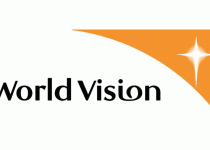SEC (Securities and Exchange Commission) Mission and Vision Statement Analysis

SEC’s mission statement is “We develop and regulate the capital market and company registration; promote good corporate governance; empower investors, corporators, and entrepreneurs; and facilitate access to financial products and resources.” The mission statement is a reflection of how the agency improves the overall investment operations in a systematically and controlled approach. The itemization of all the areas it touches shows how much SEC values thoroughness as a pointer of the fact that the agency recognizes the complexities in its area of operations. The following elements emerge from SEC’s mission statement.
- Promote empowerment
- Exceeding expectations
- Provide progressive leadership for change
The first element in SEC’s mission statement reveals what SEC (Securities and Exchange Commission) is set to promote in all the areas that it reaches – empowerment. The emphasis that the company lays on this factor indicates its recognition of emboldening institutions and investors to make informed decisions that foster progress. Particularly, the agency does this by offering its clients diversified plans and programs suited for their needs. SEC is determined to leave a mark through its mandate, and this explains the vibrancy characterizing its activities. In order to meet all that it is tasked to do, SEC continues to devise systematic reorganizations, upgrades and simplifications, something that offers investors, entrepreneurs and other clients much more than they expect. In this way, the agency has shown its desire to satisfy its second element of going beyond the expectations of its clients. The ability to do so closely relates to the leadership approach of the institution. As a national agency, SEC recognizes the critical regulatory and oversight role bestowed on it. It understands the influence of its position as demonstrated by its adherence and fully exercising of all its powers and functions.
Introduction
The Security and Exchange Commission (SEC) is a demonstration of how the success of a company can be reflected in its mission and vision statements. Since its foundation is 1936 the commission has shown consistency, valour, and diligence in staying true to its mandate. Its discipline and progressive work towards its vision have earned it a name as the best and reliable market regulatory and supervisory government agency. In relation, SEC mission and vision statements speak to its scope of operations and what it does. The mission statement of a company is technically a description of the actions the company does to meet the needs of its customers. SEC mission statement agrees with this by outlining all the directive and supervisory mandates of the institution. Closely related to this is the company vision statement, which depicts the strategic projection that the company wants to take and the future position it aspires to be in. SEC vision statement envisions that by 2022, its operations will have created secure, reliable and robust investor and exchange systems. Achievement of the mission and vision statement of a company is highly influenced by the values the company adopts because these are essentially the guiding principles for all the activities of any company. SEC enjoys great values such as initiative, teamwork, independence, professionalism, accountability, and integrity all of which guides everything the institution does. The presence of a focussed vision statement, comprehensive mission statement and values are indicative of the command and progressiveness SEC demonstrates.
Vision Statement
SEC vision statement is “By 2022, SEC is the champion of investor protection; the judicious administrator of an automated, reliable and secured company registration and information systems; and the progressive overseer of a robust and inclusive capital market in the ASEAN and Asia-Pacific Region.” The vision statement underscores the SEC determination to effect change and strategically place itself as a progressive regulatory agency. It shows this by outlining its projected growth path as well as the scope. Various components relate to SEC vision statement:
- Advocacy of investor security
- Innovation
- Helping clients improve their activities through technological advancements
- Regional oversight
SEC (Securities and Exchange Commission) shows its determination to meet its ‘advocacy for investor security’ component by constantly ensuring there is a safe investment environment. Its section on implementing rules and regulations ensures every operation complies with the safety features that protect the interest of all affected stakeholders. Making sure this is in place relates to SEC recognition of innovations as a crucial component towards the achievement of its vision. As a capital market, investment and exchange market regulatory agency, innovations are imperative to remain up to date, and this is the progressive desire of SEC to fully automate its systems through innovativeness. By doing so, SEC meets its third component of helping its clients to exploit technological advancements in their activities. For instance, the integration of programs that assist clients with technical aspects within the SEC system has gone a long way in achieving this component. SEC vision statement also suggests its aspiration to gain dominance as the leading oversight agency regionally.
Core Values
SEC core values comprise “Integrity, professionalism, accountability, independence, initiative, and teamwork.” These corporate values are a reflection of the standards that direct the agency towards its mission and vision statements. These components comprise:
- Integrity
- Professionalism
- Accountability
- Independence
- Initiative
- Teamwork
The first core value of SEC shows that the agency emphasizes on running all its operations from a morally acceptable perspective. SEC vision seeks to see the agency develop as a dependable institution, something that can only become a reality by demonstrating honesty and sincerity in all its mandates. The second component of these values highlights professionalism as a critical element that SEC exploits to gain confidence and credibility from its investors. SEC satisfies this factor through the thorough and non-discriminatory implementation of the laws and regulations of the agency. The third element of accountability is a reflection of how sensitively SEC takes its mandate and ensures it acts within the set standards and principles. In this way, it complements the element of professionalism. Independence is highly emphasized by the SEC as a show of their autonomy in the execution of its responsibilities without any external influence or favor. To ensure that SEC activities align with its mission and vision, the agency incorporates strategic approaches, and together with promoting teamwork as its last value, this propels the agency towards the realization of its mission and vision.
References
- Baldwin, R., Cave, M., & Lodge, M. (2012). Understanding regulation: theory, strategy, and practice. Oxford University Press on Demand.
- Bhagat, S., & Bolton, B. (2008). Corporate governance and firm performance. Journal of corporate finance, 14(3), 257-273.
- Cortés-Sánchez, J. (2017). Mission and Vision Statements of Universities Worldwide: A Content Analysis. Documentos De Investigación, Facultad de Administración, (152), 2463-1892.
- Ferguson, J., & Milliman, J. (2008). Creating effective core organizational values: A spiritual leadership approach. Intl Journal of Public Administration, 31(4), 439-459.
- Fredriksson, M., & Pallas, J. (2016). Diverging principles for strategic communication in government agencies. International Journal of Strategic Communication, 10(3), 153-164.
- Garnett, S. T., Lawes, M. J., James, R., Bigland, K., & Zander, K. K. (2016). Portrayal of sustainability principles in the mission statements and on home pages of the world largest organizations. Conservation biology, 30(2), 297-307.
- Malgeri, J. (2010). Enhancing the Knowledge Management Capabilities of Federal Agencies. Public Manager, 39(3), 11.
- Powers, E. L. (2012). Organizational mission statement guidelines revisited. International Journal of Management & Information Systems (Online), 16(4), 281.
- Securities and Exchange Commission – About us.
- Schaefer, C. (2016). Government Agencies and Great Customer Service: A Match Made by Baldrige. image, 1, 4_service.
- Verhoest, K., Van Thiel, S., Bouckaert, G., Lægreid, P., & Van Thiel, S. (Eds.). (2016). Government agencies: Practices and lessons from 30 countries. Springer.










